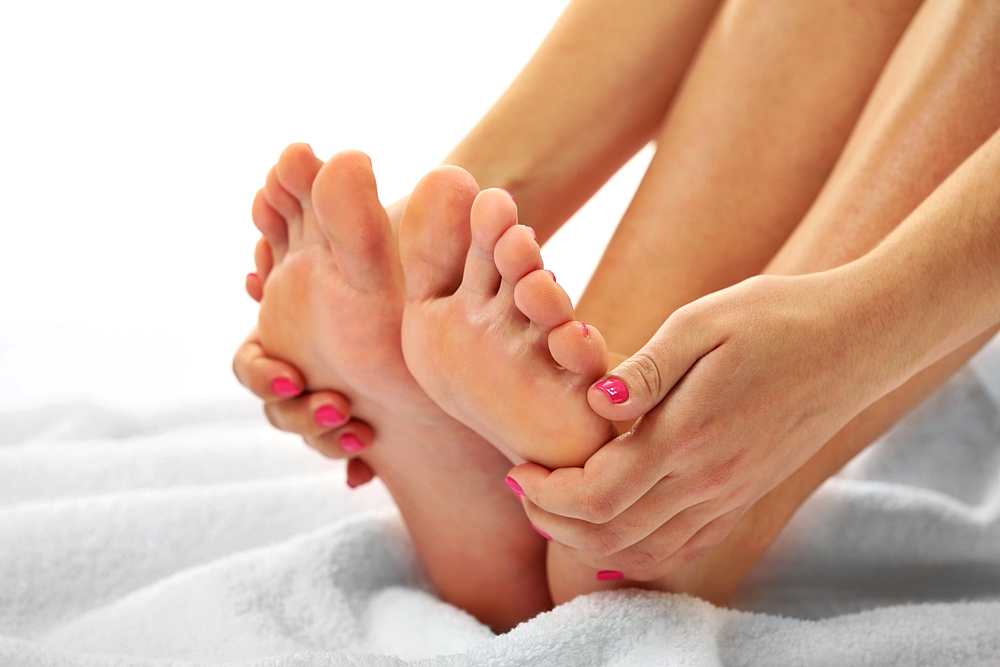Soon we can get the sandals out of the closet! We reveal what you need for well-groomed feet with the seven most frequent questions and answers.
It’s time for an extensive foot care regimen. But should you really remove calluses regularly? Do I have to go to a nail study or medical foot care for a pedicure? And how short can you cut your nails? What to do with ingrown nails And how often should you remove calluses? We spoke to an expert about well-groomed feet: 7 questions, 7 answers – this is how your feet will look pretty quickly.
1. Is medical foot care worthwhile?
It always depends on the situation: If it is just a matter of making your feet a bit “summery”, a pedicure in a good cosmetic studio is sufficient. “As soon as it becomes more medical, for example a corn or a rolled-up nail has to be treated, you should go to a podiatry practice,” advises podiatrist Dirk Reher. Good to know: The terms medical podiatrist and podiatrist have been protected for several years – a normal podiatrist or beautician are therefore not allowed to offer medical foot care.
2. How does the nail polish color last as long as possible?
Artfully painted and then immediately a quirk in the paint? Happened more often in the open-air season because the nails can always hit something. In addition, UV rays, chlorine from pool water, etc. can lose the luminosity of the color. On the other hand, a top coat with a UV filter, which can be applied over any colored paint (e.g. from Sally Hansen), helps. In addition, always use a base coat: It evens out unevenness in the nail so that the color is better distributed and protects the nails from being discolored by bright tones. Otherwise, long-lasting varnishes are also a good option – you can now brush them on yourself at home (e.g. “All Week Long” from LCN) or you can go to the beautician.
3. Does the cornea grow back more if it is removed often?
Unfortunately, not much helps much at this point. Because: “Callus is created by pressure or friction”, explains Dirk Reher, podiatrist and president of the “Central Association of Podiatrists and Podiatrists in Germany”. If you rub the keratinized areas too often, “the skin wants to protect itself against the irritation,” says Dirk Reher. The foot expert therefore recommends not using a pumice stone or a fine rasp for removal more often than every 14 days. On the other hand, he advises against using special callous planes – they can quickly remove too much skin.
4. Is there an SOS trick for tired feet and heavy legs?
Oh yeah! It is best to always have a small bottle with a cooling spray with you and to mist your feet or legs with it in between. Also works over tights – great when you’re in the office on hot days! There are special cooling sprays for the legs, but otherwise one with thermal water from the pharmacy is sufficient. Extra tip: Foot baths are not just something for cuddling, on warm days a refreshing one is really good. Special bath additive with herbal extracts cleanses, invigorates and deodorises.
5. What helps against uncomfortable summer shoes?
You can make shoes a little more comfortable with transparent gel pads for balls or heels: They are non-slip and can sometimes be used several times. A protective gel that is applied to vulnerable areas and protects them from friction can also help against blisters. In general, however, as much as we look forward to the sandal season, our feet don’t always share the joy. Especially when it comes to high heels. Because the higher the heel, the less favorable the load. But wedge heels or flip-flops are also not ideal in the long run. After all: In contrast to winter, you are more flexible when choosing your shoes. Experts advise you to vary your footwear or heel height as often as possible in order to train your feet. And walking barefoot more often – that strengthens you in the long term.
6. Why are the feet in particular often a “dry zone”?
Because there are fewer sebum glands here, the skin on the feet also produces fewer lipids (fats) and therefore dries out faster. So always apply a nice cream to avoid cracked areas. Care products with urea, for example, are ideal. Also practical: disposable socks that contain care substances and can be worn in the shoe.
7. Is it true that you shouldn’t cut your toenails too short?
Yes! Because if too much is removed, there is a risk of ingrowth. “The length of the nail should be shortened so that it roughly ends with the tip of the toe,” recommends podiatrist Dirk Reher. In addition best in such a way to file that the result looks spade-shaped.

